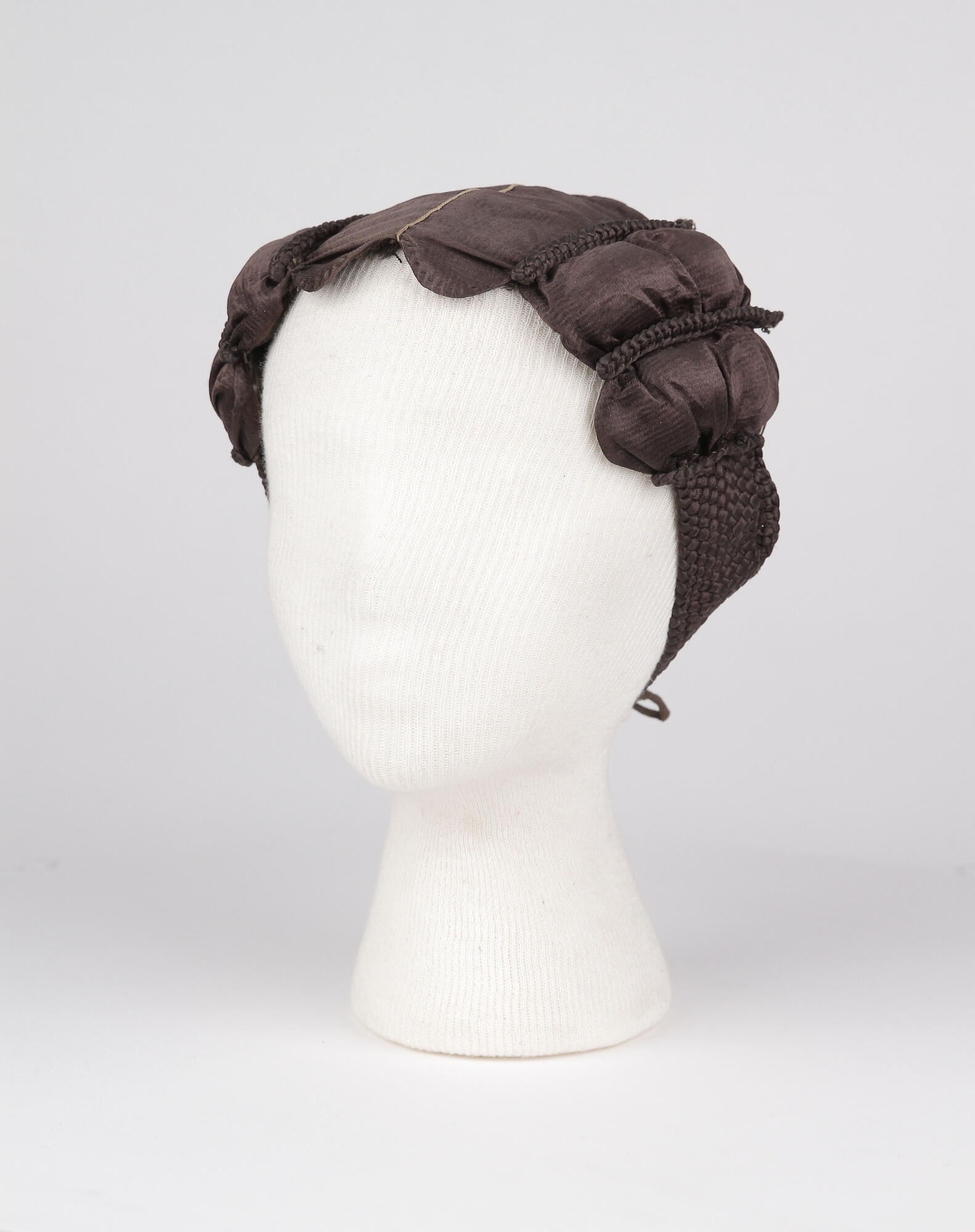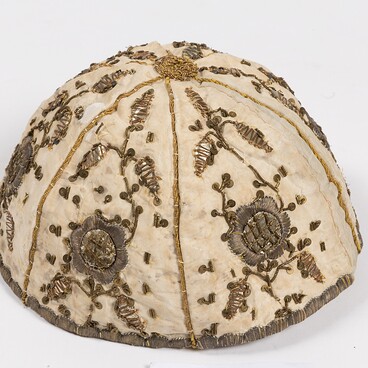The female costume of the Jews of Eastern Europe of the 17th–19th centuries developed under the influence of Polish urban dress and the decorative traditions of the Slavic population. Jews were restricted in their rights to wear national attire, but at the same time sought to preserve their ethnic individuality. At all times their clothing was different from that of Christians and Catholics.
Jewish married women wore voluminous shawls over their clothes, which concealed the outlines of their figures and sometimes their faces and wrists. Hats, bonnets, and cotton kerchiefs gradually came into fashion. Women covered the front of their heads with hair and silk wigs, since Jewish married women were supposed to shave their heads. Hair in Judaism was considered a symbol of temptation and sin, so the wife was obliged to hide it so as not to distract her husband from reading the Torah and praying.
After the wedding ceremony, the woman covered her shaved head with a shawl or wore a cap. Women usually wore headdresses together with simple dark wigs. In orthodox families, women used band wigs, which were sewn by hand from quilted fabric and fake hair. Such wigs had a number of strings and were difficult to fix on the head. In the second half of the 19th century more comfortable wigs and hairpieces made from natural and artificial hair appeared.
The main sacred book of the Jews, the Torah, says nothing about wigs. This tradition, observed by orthodox Jewish women, came later — in the 17th century. At that time wigs made of textile began to appear, and rabbis’ opinions on their acceptability were divided. Nevertheless, the popularity of wigs grew, especially among rich Jewish women, and reached its peak in the 18th century.
The fashion for wigs began to wane after a series of Jewish reforms by Russian Emperor Nicholas I. In 1852 he established special dress codes for Jews, which forbade men to wear payes and yarmulkes outside their homes and synagogues, and women — to shave their heads and wear wigs. The enforcement of this law was controlled by public raids, but these Jewish traditions were preserved in Russia for another 100 years.
Jewish married women wore voluminous shawls over their clothes, which concealed the outlines of their figures and sometimes their faces and wrists. Hats, bonnets, and cotton kerchiefs gradually came into fashion. Women covered the front of their heads with hair and silk wigs, since Jewish married women were supposed to shave their heads. Hair in Judaism was considered a symbol of temptation and sin, so the wife was obliged to hide it so as not to distract her husband from reading the Torah and praying.
After the wedding ceremony, the woman covered her shaved head with a shawl or wore a cap. Women usually wore headdresses together with simple dark wigs. In orthodox families, women used band wigs, which were sewn by hand from quilted fabric and fake hair. Such wigs had a number of strings and were difficult to fix on the head. In the second half of the 19th century more comfortable wigs and hairpieces made from natural and artificial hair appeared.
The main sacred book of the Jews, the Torah, says nothing about wigs. This tradition, observed by orthodox Jewish women, came later — in the 17th century. At that time wigs made of textile began to appear, and rabbis’ opinions on their acceptability were divided. Nevertheless, the popularity of wigs grew, especially among rich Jewish women, and reached its peak in the 18th century.
The fashion for wigs began to wane after a series of Jewish reforms by Russian Emperor Nicholas I. In 1852 he established special dress codes for Jews, which forbade men to wear payes and yarmulkes outside their homes and synagogues, and women — to shave their heads and wear wigs. The enforcement of this law was controlled by public raids, but these Jewish traditions were preserved in Russia for another 100 years.



